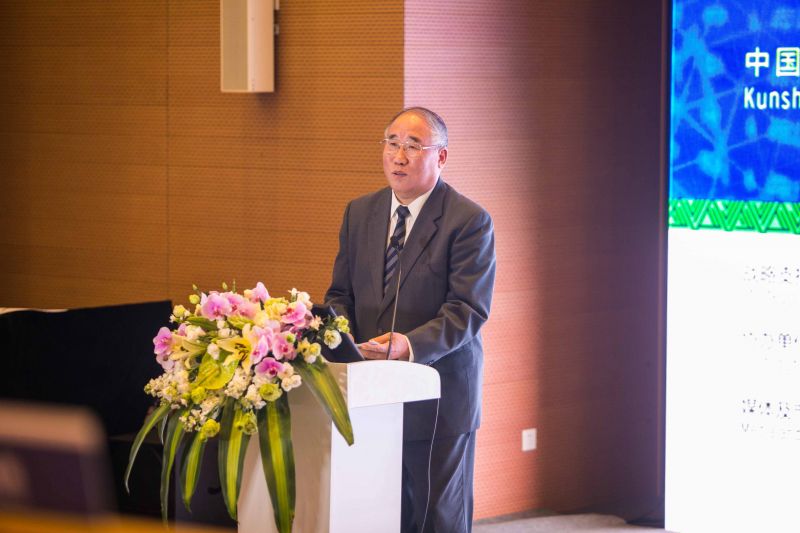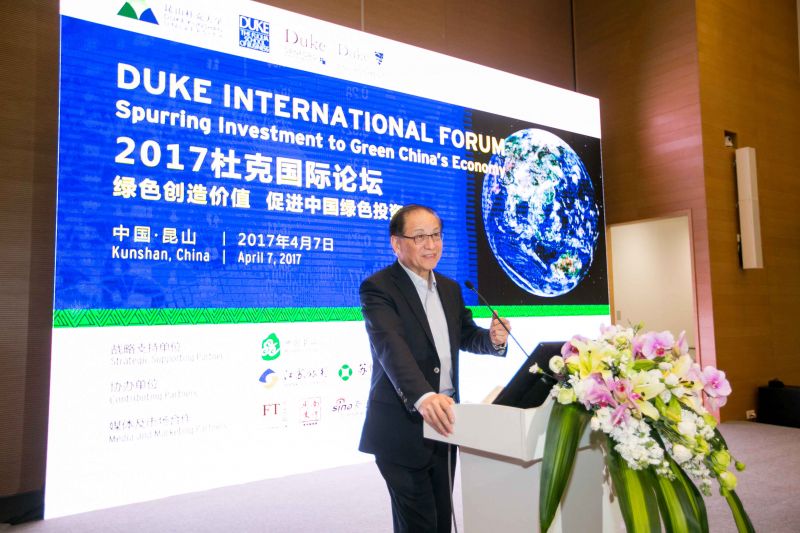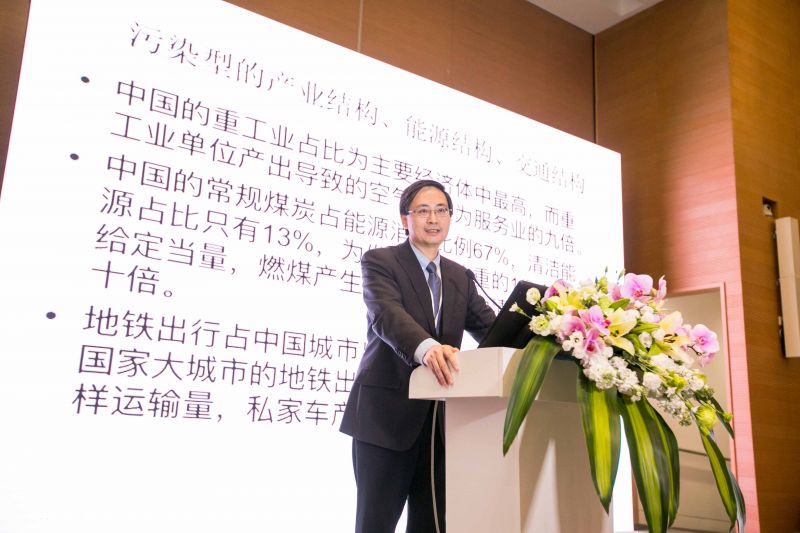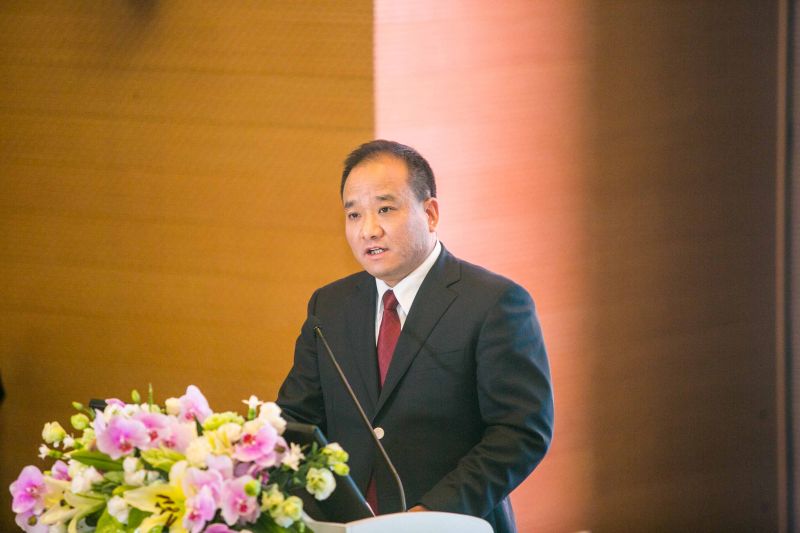The 7th of April 2017 also marks the establishment of the Green Finance Initiative (GFI) at Duke Kunshan University. The GFI aims to enhance the effectiveness of green-finance policies and practices in China. In order to achieve this objective the GFI will facilitate a number of events, which will allow for a structured exchange of ideas among leading policy makers, academics and corporate executives to generate a relevant research agenda, new evidence-based knowledge and practical implementation paths. Through multi-sector collaboration, the GFI will bridge academic research and practical applications in topics such as green finance architecture, the key design elements in green finance, financial instrument innovation in the green sector, green finance risk management and regulatory frameworks.
Denis Simon, Executive Vice Chancellor of Duke Kunshan University, Zhenhua Xie, Special Representative on climate change, Deputy Director of Chinese People’s Political Consultative Conference (CPPCC), formal Vice Chairman of National Development and Reform Commission (NDRC), Mingkang Liu, Deputy Director, Committee for Economic Affairs of CPPCC, former Chairman of China Banking Regulatory Commission (CBRC), and Linrong Yao, Secretary of Kunshan Municipal Committee (from left to right) launched the Green Finance Initiative.

Special Representative on Climate Change
Deputy Director of the Committee of Population, Resource and Environmental Affairs of Chinese People’s Political Consultative Conference (CPPCC) Former Vice Chairman of the National Development and Reform Commission (NDRC)
To achieve the goal of making advancements in green low-carbon, these actions should be followed: take the opportunity of in-depth advancement in supply-side structural reform to promote economic development and green low-carbon transition; utilize the comprehensively deepened low-carbon pilot sites as a guide to boost low-carbon evolution patterns and technical innovations, and emphasize carbon emission peak value and total value to increase the number of low-carbon pilots at every administrative level; make fully functional the market mechanism to promote low-carbon development; and launch a national trading market of carbon emission rights to motivate green finance system construction.

If a company values green development, then its awareness of social responsibility is higher and it cares more about integrity and the contract spirit. Thus, the non-performing loans ratio (NPLR) will decline. The NPLR of green finance is only 0.41%, but the overall NPLR is 1.81%. The Index of green finance must be newer, higher and more precise. Green standards from the Ministry of Environmental Protection (MEP) can be used as references. Industrial standards can be used as the criteria for fields that the MEP green standards do not cover. Besides, system construction and reformation within the financial institutions are also very important. Furthermore, the government should enhance the transparency of information disclosure and rely on the legislations to facilitate green development. Last but not least, the importance of communication and cooperation cannot be neglected, and all sectors must collaborate and concentrate on green development.

There are three goals that the finance system should accomplish: increase the rate of return on green investments, decrease the rate of return on polluting investments, and strengthen the green preference of companies and customers.

Green development is facing challenges from six aspects and the insurance industry can help solve the problems.
- Promote the transition of traditional industries to green industries by internalizing the cost environmental risks, which will solve the problem of high emission and pollution.
- Promote the formation of green consumption value from all perspectives, such as food, living and transportation. By showing the explicitness of potential positive externalities to resolve the high carbon and energy issues;
- Promote the harmony of human beings and the nature by decreasing social risk preference, which will mitigate the damages brought by the disasters;
- Promote ecological protection. Solve the problem of environmental capacity deterioration in rural areas, by implementing the “Green Box Policy”.
- Nurture the momentum of green innovation. By providing personalized guarantees to technical risks, to help reboot green technological innovations;
- Deepen the capital development in green industry. Through credit enhancements and direct investments, solve the issue of underinvestment in the green industry.
Regarding these issues, the government should accelerate legislation in related fields, emphasize policy guidance, deepen the application of green finance, and extend the service chain of green insurance and elevate the support from the insurance industry to the development of green industry.
Water sewage disposal is not only a must to environmental protection but also a big commercial opportunity. Banks should suppress business activities or companies that are harmful to the environment Banks can achieve this goal by applying financial manners to their borrowers. Green and finance can work via the internet and combined with the environment.

